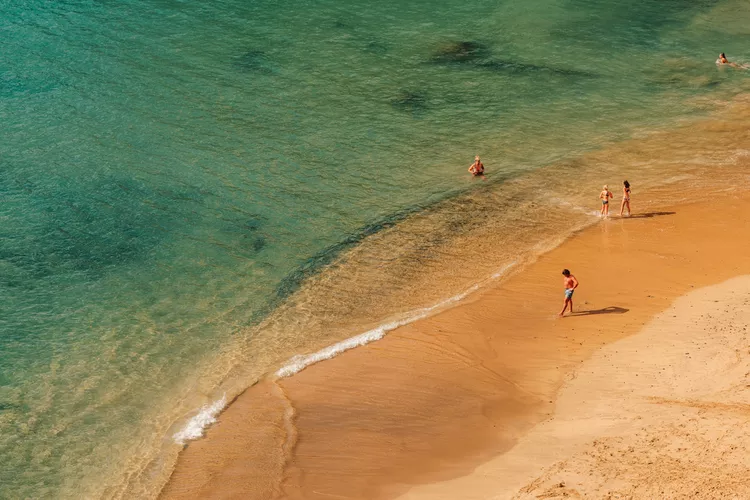Summary
Experience the Enchantment of the Canary Islands with GoTravelDaily
Off the coast of northwestern Africa, the Canary Islands are a remote beach paradise. Here’s how to experience them.
A few years ago, I left my home in Athens and settled on the Greek island of Tínos. I had never lived on an island before—let alone spent any prolonged amount of time in a place without an airport—but I quickly adjusted. Islands are detached in all senses of the word: time moves differently, and communities are usually more self-sufficient. Surrounded by horizon and only able to leave by boat, I fell in love with the harmonious way islanders live, and became fascinated by the way nature and the elements rule everyday life.
Consequently, I started learning about the Canary Islands.
Introduction to the Canary Islands
A Spanish archipelago consisting of seven main islands and several islets scattered off the northwestern coast of Africa, the Canaries exhibit geological and biological diversity: damp laurisilvas (laurel forests), rocky deserts, temperamental volcanoes, and tropical beaches. Each island possesses its own unique microclimate and energy.
Geological and Biological Diversity
However, rugged, elemental landscapes aren’t necessarily the first things that spring to mind when considering the Canaries. Since the 1960s, the two largest islands, Gran Canaria and Tenerife, became popular holiday spots for sun-starved northern Europeans, giving the region a reputation for mass tourism.
Unique Island Experiences
I am drawn to unraveling stereotypes. Thus, in late June of last year, I flew to Tenerife, the most populous of the Canaries. I picked up a rental car from the airport and dropped my bags at the Ritz-Carlton, Abama, a sprawling resort on the beachy western coast. Its design nods to North African architecture, featuring beautifully wood-trimmed balconies against reddish hues mirroring the land surrounding the dormant volcano, Pico de Teide. This luxurious resort serves as an excellent base for exploration.
As I drove north through lush, rolling hills, I passed a hand-painted sign: Fukuoka Farm. I performed an illegal U-turn on the mountain road. The name of Masanobu Fukuoka, a Japanese farmer and philosopher who invented “do-nothing” farming, attracted my attention. I navigated my car down an unpaved dirt road to discover a family home.
Off the Beaten Path Adventures
Federico Negrisolo and his partner, Romina, moved from Italy to Tenerife nearly a decade ago, seeking an intentional lifestyle intimately connected to nature. “Living like this is a philosophy,” Federico explained over tea in their living room. They utilize Fukuoka’s methods to grow vegetables like cabbage and lettuce, which they sell in local markets, giving tours to visitors by appointment.
The duo insisted I stay for lunch, so I played with their toddler daughter while they prepared an omelet with their chickens’ eggs, serving boiled potatoes that, thanks to the mineral-rich soil, tasted extraordinary. Federico introduced me to gofio, a staple made from ground cereals, adding a unique touch to my culinary experience.
Exploring El Hierro
After my gastronomical adventure, I traveled to El Hierro, the smallest of the Canaries and a UNESCO Biosphere Reserve. I took a ferry from Tenerife, arriving at Puerto de la Estaca. With a population of just 11,500, this remote island offers solitude. As I drove through tunnels and volcanic cones, I discovered tropical mountains, tide pools, and soaring gorges ideal for hiking and diving.
If you seek uncommercialized experiences, El Hierro is perfect. There are natural seaside pools, or charcos, like Charco Azul, which captivates visitors with its azure waters. Additionally, I visited the interpretive center at the Parque Cultural de El Julan to learn about the Bimbache people.
Wonders of Lanzarote
Lanzarote, influenced by its volcanic features and natural wines, captures your senses. The island’s unique climate promotes ingenious vineyard practices, producing minerals in the grapes that enhance flavors. The landscape features semicircles of volcanic rock providing protective barriers, allowing the vines to flourish.
Amid its volcanic backdrop, I explored various lodgings like Alava Suites, where Maria Alava emphasizes simplicity in design and natural beauty, echoing artist César Manrique’s vision of preserving Lanzarote’s charm.
Where to Stay & Eat
Tenerife
Where to Stay: The Ritz-Carlton, Abama: This terra-cotta-red resort is large but retains a sense of privacy and attentive service.
Where to Eat: La Bola de Jorge Bosch: A chic guanchinche featuring local produce showcasing Canarian cuisine.
El Hierro
Where to Stay: El Sitio: Seven lovely bungalows amid lush greenery, run by Germany-born Sabine Willmann.
Where to Eat: 8Aborigen: Fine-dining interpretations of Indigenous food make this El Hierro’s best restaurant.
Lanzarote
Where to Stay: Alava Suites: Six modern guest rooms with stunning views of landscaped gardens.
Where to Eat: SeBe: They prepare Canarian ingredients with Iberian flair, known for standout rice dishes.
Travel Tips for the Canary Islands
When planning your visit to the Canary Islands, consider the diverse experiences each island offers. Explore the lush surroundings, indulge in local cuisine, and immerse yourself in the rich culture. The Canaries promise an unforgettable escape!





